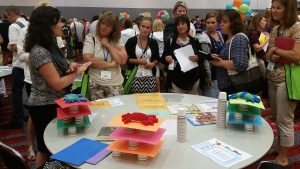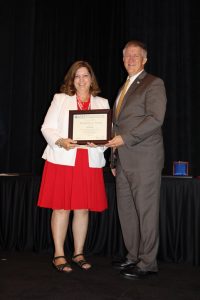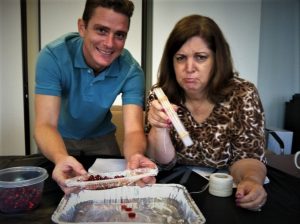Research: Using ‘F Words’ in Elementary STEM
Failure – and learning from it to improve a process, product, or system – is integral to engineering design. Yet in most classrooms, the ‘F word’ represents just the opposite: a total absence of learning, effort, or even intelligence.
How can teachers change their perspective and incorporate “fail words” to support student learning, inquiry, and recovery from setbacks?
American Society for Engineering Education‘s Pre-college Engineering Education Division leaders Pamela S. Lottero-Perdue, professor of education and director of Towson University’s Integrated STEM Instructional Leadership post-baccalaureate certificate program, and Elizabeth A. Parry, an engineer and Presidential Awards for Excellence in Science, Mathematics, and Mentoring winner who headed North Carolina State University preK-12 outreach program, have spent years researching perceptions of failure and use of “fail words” by elementary teachers in the engineering curriculum.


They presented on the topic at the National Science Teacher Association’s 2016 STEM Forum (photo, above) and won an ASEE Best Paper award for their research. (Parry, right, was named an ASEE Fellow in 2016.) Engineering is Elementary’s blog post [7/7/15] includes a link to their paper as well as a description of when teachers (rarely) did use fail words. Lottero-Perdue’s work with Harford County (Md.) Public Schools elementary teachers also was featured in a 2012 ASEE Prism magazine cover story.
Their most recent research paper, Elementary Teachers’ Reflections on Design Failures and Use of Fail Words after Teaching Engineering for Two Years, builds on that work.
The mixed-methods study examines how teachers who have taught one or two units of the Engineering is Elementary (EiE) curriculum for two years reported on: students’ responses to design failure; the ways in which the teachers supported these students and used fail words (e.g. fail, failure); and their broad perspectives and messages to students about failure.
In addition, the study explores how strategies, perspectives, messages, and fail word use may change after two years of engineering instruction. Data collected included 74 surveys, containing both quantitative and qualitative items, and 10 in-depth, semi-structured interviews.
Findings included that the elementary engineering classroom is a complex space in which teams may or may not experience design failure. For those that do, they—and, in turn, their teachers—may respond to this experience in a wide range of ways. Also, after two years of teaching engineering, teachers felt more comfortable preparing students for design failure experiences, and responding when design failure occurred. Most also felt more comfortable using fail words, and when they used these words, learned to do so with context and care.

Photo: Setbacks are part of engineering design process, as engineer and educator Liz Parry demonstrates after testing an activity to teach buoyancy and displacement. Her soda-straw boat sank immediately while its counterpart – fashioned by an ASEE staff member with no engineering or science background – stayed afloat as “cargo” was loaded.
Images ©American Society for Engineering Education
Filed under: K-12 Education News, Special Features
Tags: American Society for Engineering Education, elementary engineering, Elizabeth Parry, Engineering Design, learning from failure, Pamela Lottero-Perdue, research on engineering education, Research on Learning, research on teaching and learning, Teacher Resources








